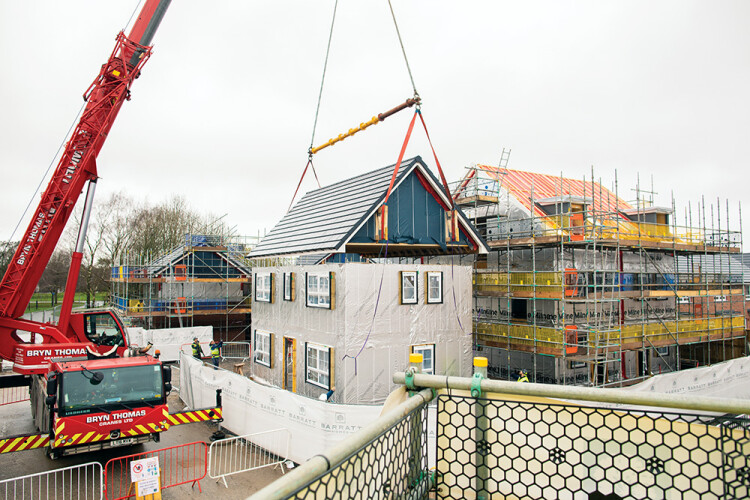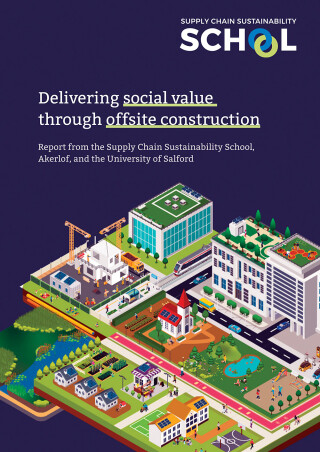It is 10 years since legislation was passed in the UK making it mandatory for public procurement officials to include consideration of something called ‘social value’ in the award of public sector contracts. They now have to look beyond price and quality, and factor into their decision-making other ‘social’ benefits that bidders might be offering, either directly or indirectly.
Since then an entire new industry centred on the concept of social value and corporate social responsibility has emerged. Many – perhaps most – major construction companies employ social value practitioners, either directly or as consultants (or both) to think up ways in which social value is, or can be, added on construction projects.
This has taken on further impetus since the publication in 2020 of PPN06/20, a Cabinet Office public procurement notice that put a mandatory 10% weighting on the social value accruing from the award of a contract. Doing good, therefore, is now quite literally a point-scoring exercise. If you don’t score the points, you are unlikely to win the contract.
In November, tier one contractor ISG was advertising for a social value apprentice. The advertisement stated: “On this 36-month apprenticeship, you’ll have a unique opportunity to learn and work in a global company alongside some of the brightest minds and industry experts. You’ll be studying for a Level 4 - Corporate Responsibility and Sustainability Practitioner qualification. We’ll fund your course, and 20% of your time will be spent on your studies.”
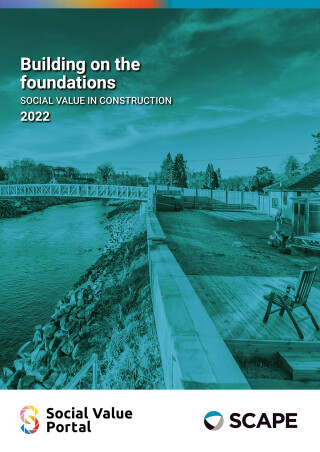
The duties of this apprentice were listed as
• “Support the social value team on the design and delivery of the social value plan and how it will be achieved
• Support project teams to implement social value initiatives (including work placements, apprenticeships, educational events, careers events, community initiatives, supply chain engagement and support)
• Support projects in recording, reporting and achieving social value targets
• Attend meetings with clients, stakeholders, and other third-party organisations
• Identify and liaise with relevant partner organisations, such as local schools, charities, employment and skills agencies
• Monitor and review social value data to ensure accuracy and performance improvement.”
Do you have someone doing this in your organisation? If not, you are behind the curve.
Responsible companies have always done good works on the side. Leverhulme, Saltaire and Bournville stand as testament to corporate benevolence and paternalism. But less celebrated companies have also regularly made charitable donations, sponsored local sports clubs or helped out local schools and youth groups.
Today, however, it is necessary to put a monetary value on these endeavours in order that they may be weighed and measured when bidding for contracts. You can also factor in any new jobs that you may create if you win the work, and how much training you will be doing. You will score extra if the training is for a social or socio-economic group deemed by the client to be a particular priority.
Sometimes the added social value has a direct benefit to the contractor taking on apprentices, for example. At other times it is simply altruistic – or at least it would be were it not also accumulating contract-winning points. The moment a business tells anyone about its good works, it ceases to be selfless.
The origins of measuring social value lie in the Public Services (Social Value) Act of 2012, which in turn was born out of the localism agenda promoted by David Cameron’s
coalition government. The legislation “requires the public sector to ensure the money it spends on services creates the greatest economic, social and environmental value for local communities”.
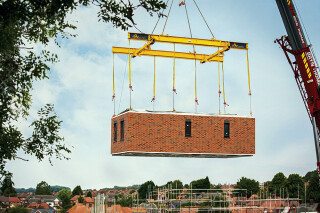
The key word there is local.
It was intended partly to make sure purchasers were taking the widest possible view of ‘value’ in order to get the most bangs for their bucks and partly to protect local businesses from being elbowed out of the market by big national, or multi-national, corporations, ‘buying’ their way in by under-cutting on price.
A building company based in, say, Plymouth or Carlisle, with deep-seated local roots is inherently more part of the social fabric – employing more local people, spending its money with local suppliers – than a big national contractor that is going to fly in and fly out again.
The social value act was therefore meant to protect and promote small and medium-sized enterprises (SMEs). In this respect, the legislation has failed. Instead, big companies have rapidly come to terms with the new rules of engagement and employed the new breed of social value practitioners to advise and implement strategies that demonstrate their good works.
A hypothetical ‘National Builders plc’ from out of town is now in a position to put together a much more powerful package of social value measures than a small local firm. It can give money and/or staff time for local charitable endeavours, employ local subcontractors and take on local apprentices, for example. The local builder might be doing all of this already but does not have the marketing budget to convey its message as effectively.
Maybe it does not matter, so long as the required hospitals and schools are being built and builders are now focused on doing good deeds rather than just making a quick buck. The building gets built either way and the good deeds get done.
The Social Value Benchmarking Report, published in September 2022 by public sector procurement body Scape and Social Value Portal, a specialist consultant, stated that the construction industry achieved £1.08bn of social and local economic value in 2021, a 14% increase on the previous year.
Remarkably, almost 20% of total spend on projects was invested in what were categorised as social value initiatives, the study found.
However, it also found that contractors on smaller projects delivered substantially more social and local economic value – as a percentage of project cost – than on larger projects.
In 2021 contracts valued at less than £2.5m delivered 37% social and local economic value; contracts in the £2.5m to £7.5m delivered 34%. As contracts get bigger, the percentage of social and local economic value decreases. Contracts in the range between £20m and £75m managed 22%. Above £75m, that figure falls to just 8%.
For all its efforts, its seems that big construction does not deliver social value in the way that SMEs always have.
Despite their shortcomings, big contractors from out of town have risen to the challenges faced by the legislation and persuaded procurement officials that they can do just as much, or more, good for the local area than the local firms can manage.
And then there’s offsite construction, bringing all sorts of different issues into play. If a new school in Plymouth is going to be manufactured in East Yorkshire and just needs a local crane company to lift it off the lorry when it arrives, where’s the social value in that?
On the face of it, it’s a quandary. Especially as maximising social value and maximising offsite construction are two of the main planks of government construction policy. How to resolve this paradox?

That was the question the offsite industry asked the Supply Chain Sustainability School to explore last year.
The result is a report, Delivering social value through offsite construction, published in November. The stated aim of the document is “to support offsite organisations in taking their first steps to embed social value, by understanding where to start”.
While it does not set out to be a lobbying or marketing tool (the Supply Chain Sustainability School’s role is simply to promote best practice) the offsite sector will doubtless latch on to its messages as the remote manufacturers seek to maximise their social value scores.
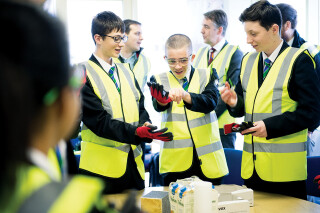
What the report makes clear is that social value is no longer just about localism and
local needs. There are also national priorities that national clients may have, and here offsite might match, or even beat, traditional construction methods with onsite employment.
“The way that we define social value has changed...It has grown much broader, to respond to the needs of both the environment and society” - Ellie Jenkins, co-author, Delivering social value through offsite construction.
The Supply Chain Sustainability School’s director, Ian Heptonstall, writes in the foreword to the report: “The challenge for those in the world of offsite construction, where the pre-manufactured value of components and modules is much higher, is that traditional benefits of local job creation and local spend may seem harder to achieve. But the process of offsite can and does create significant amounts of local value in the areas where factories are located, by supporting the growth of responsible and regional businesses.
“Fundamentally, it is this tension between local and national social value that leads to
an assumption that offsite will deliver less social value.”
It is an assumption thoroughly challenged by the report.
On job creation, for example, the report says: “The most commonly perceived drawback of offsite construction with regards to social value is the difficulty in achieving the quantity of job creation local to the development site compared to traditional construction. This is often driven by client requirements stipulating social value outcomes to be within a set proximity of the site or city, especially in the case of local planning authorities wishing to capture value within a specific geographical area.
“However, offsite construction offers new job roles both at the site of manufacture and at the project site, including in digital design, multi-operative roles, logistics and assembly. Depending on the design, jobs requiring less formal training can be created local to the site, empowering community builds or bringing new entrants into the sector.”
“The offsite construction model brings about flexibility in the location of production and therefore job creation. In this way, offsite manufacturing has the potential to help re-distribute the economic value of developments to communities most in need of economic uplift. This is particularly important in the context of long-standing regional inequalities that exist in the UK. Factories can be located permanently in areas with histories of manufacturing, bringing long-term jobs to where they are needed and where skills already exist. The establishment of facilities can also provide a more widespread economic uplift as local supply chains are developed. This can encourage innovation, as well as provide the opportunity for partnerships which have a knock-on effect on other areas of social value, such as circular economy models.”
It continues: “In scenarios where the greatest social value benefits would come from production more local to site, the flexibility offered by offsite can also provide this. During research and interviews, a number of organisations expressed their ability to move manufacturing locations depending on the scenario. Zed Pods, for example, is able to use factories located close to the site due to the factory-agnostic model used. Use of ‘pop-up’ or ‘flying’ factories has also been used in infrastructure contexts such as airports and rail extension projects, providing final stage assembly jobs local to site in addition to regional manufacturing roles. In the future, offsite manufacturing hubs could be distributed across the country, with local authorities deciding where they can provide optimal social value.”
While perceived wisdom is that local authority clients want to promote job creation within their towns and cities, some may place a higher premium on peace and quiet; they may mark that more highly than local jobs on the social value scorecard.
Or as the report says: “An obvious social value benefit brought about by the quicker build speeds, fewer material and vehicle movements, and reduced personnel traffic of offsite developments is the associated drop in pollution, noise and disruption for local residents. For example, a reduction in vehicle traffic of as much as 40% has been reported from projects with fully fitted-out modules. A reduction of CO2 emissions related to site-based transport of 60% was found in a comparative study between modular and conventional buildings. It would be reasonable to draw conclusions that air pollution and traffic disruption were also significantly reduced.”
The report concludes: “Areas in which there are compelling reasons offsite could excel include improvements in working conditions and job satisfaction, diversity and inclusion, tackling regional inequalities, skills development, minimising local disruption and pollution and tackling the energy performance gap in buildings. However, there [is] a lack of comparative data sets to back up these inferences.”
This report, the authors make clear, is just a starting point. “It is not the purpose of this report to say that offsite is better or worse than traditional construction,” says co-author Ellie Jenkins, a social value consultant. “It is to say that, from the research we have done, we can see that social value can be created by the offsite sector. And what we want to do is enable offsite organisations to deliver the greatest social value that they can.”
The report says the offsite sector now needs to gather more social value data “to inform comparative assessments of differing approaches to delivery and drive continual improvement”.
And different approaches to offsite construction may score differently for social value.
“With growing data availability and research, it may become possible to compare the social value strengths and weaknesses of the various categories of offsite construction,” the report says. “This data will enable clients to more effectively and efficiently design an offsite strategy that will meet the required social value outcomes.”
One topic mentioned in the report as a potential scoring point for offsite construction is resilience – the implication being that prefabricated structures and system builds are less likely to fall apart than traditionally built ones.
“Momentum is growing around the topic of resilience, and while not explicitly included in social value at this point, it is certainly an area to watch,” it says. “Improving the resilience of structures and buildings should be considered an important aspect of social value.”
Sound advice. But while this may be a sales pitch for precast concrete over cast in situ, it is on dodgy ground in the context of volumetric, flatpack or system building, where manufacturers are notably coy on the topic of design life. Nevertheless, it certainly seems like something that should be included in social value metrics.
Got a story? Email news@theconstructionindex.co.uk

